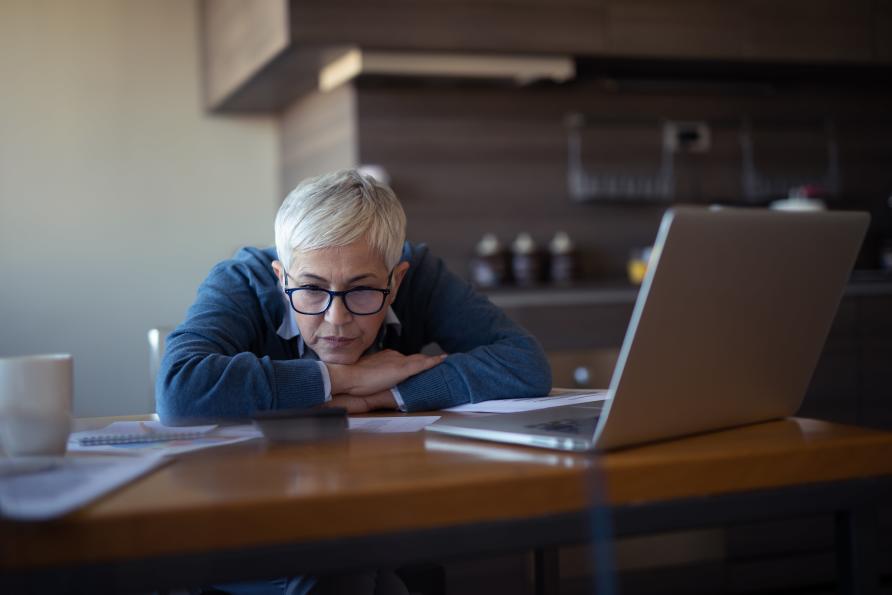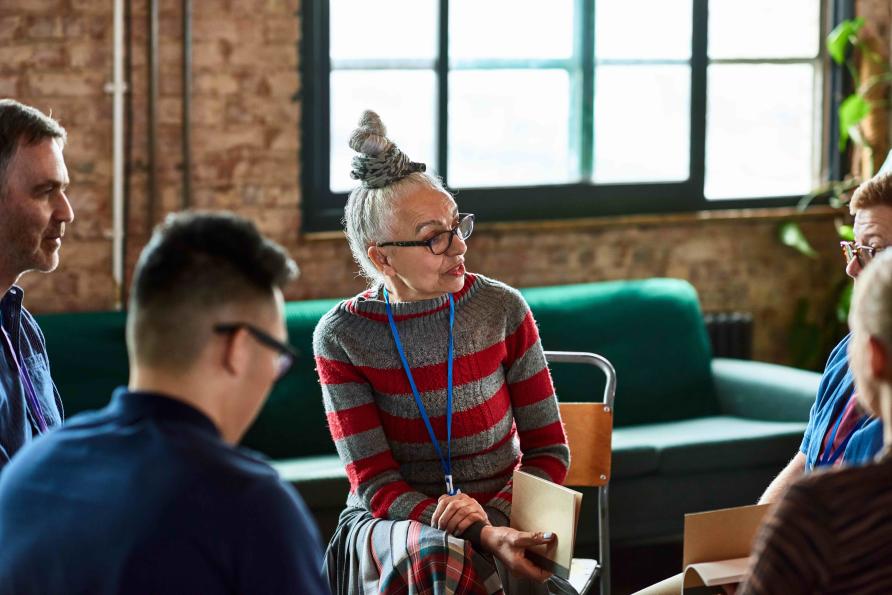Women, age discrimination and work

Reports out of the UK and Europe have found that ageism is the most common type of discrimination. In the US, around 61 per cent of workers at or over the age of 45 reported witnessing or experiencing ageism in the workplace.

The fight against age discrimination in employment can come down to individuals bringing a legal claim.
But ageism hits women earlier and harder. And according to my research, most Australian women aren’t bringing their cases to court. The question is – why?
Crunching the numbers
Here in Australia, women report experiencing high levels of age discrimination at work.
In a 2014 survey of 2,109 Australians aged 50 years and over, the Australian Human Rights Commission found similar proportions of women (26 per cent) and men (28 per cent) reported age discrimination in employment in the previous two years.
Women were more likely than men to report that their experience of discrimination affected their self-esteem, mental health or stress levels.
Currently, addressing age discrimination in employment primarily relies on individuals bringing a legal claim.
These claims can be made under federal discrimination law, federal industrial law or under equivalent statutes at state and territory level.
But the system relies heavily on alternative dispute resolution, with most claims resolved through confidential conciliation or being abandoned well before proceeding to the public court or tribunal system.

Ageism hits women earlier and harder.
The question, though, is – are public legal systems actually accessible to all those who experience age discrimination in work, and to women in particular?
And, if not, who is actually using these legal avenues?
My research analysed all reported Australian cases relating to age discrimination in employment, in order to discover who is actually bringing age discrimination claims in practice.
Making an ageism claim
Women appear to be substantially underrepresented in age discrimination decisions.
Age discrimination cases are remarkably rare in Australia.
From the commencement of Australia’s age discrimination laws in the 1990s through to the end of 2017, there were only 108 individual cases relating to age discrimination at work. By way of contrast, there were over 1200 UK Employment Tribunal decisions relating to age discrimination between just February 2017 and 17 April 2019.
While these cases are rare in Australia, women claimants are even rarer. Of these 108 cases, 81 featured a male claimant, and only 28 featured a female claimant. One of these cases had both a male and female claimant.

Women are far less likely to pursue an age discrimination claim to the point of a publicly accessible case decision than their male counterparts.
Over 90 per cent of claims – 99 of these cases – related to claimants who alleged they were too old; only six related to claimants who were too young.
Ethnicity was raised in 21 cases, and disability in 19 cases. But the majority of claimants were older men – 68 per cent or 73 claimants.
Women are far less likely to pursue an age discrimination claim to the point of a publicly accessible case decision.
The reasons for this at an individual level are no doubt varied, but it may be that women are under-represented in case law for five interrelated and interconnected reasons.
Firstly, men may have greater resources than women – both financial and otherwise – that increase their capacity to pursue a claim to court.
Secondly, older women in particular may be less likely to challenge discrimination, having experienced discriminatory treatment throughout their working lives, particularly prior to the commencement of our discrimination laws.
This could mean these women are potentially internalising discriminatory sentiment which, in turn, creates a weaker attachment to work.

Older women in particular may be less likely to challenge discrimination.
Third, there are more employed men than women.
This means statistically men are more likely to be in employment, and therefore more likely to experience discrimination at work.
For example, in the 50 to 54 age group, males have a labour force participation rate of 86.6 per cent, compared to 77.6 per cent for women.
But, even factoring in these differences in gender workforce participation rates is insufficient to account for the substantial disparity in court cases.
In my research sample, cases featuring male claimants were three times more likely than those featuring female claimants.
So, this gender disparity in the case law cannot be explained by workforce participation rates alone.
Fourth, women may have alternative grounds on which to pursue a discrimination claim, such as gender or caring responsibilities.
The limited data published by Australian equality agencies makes it difficult to conclude whether women are pursuing other legal avenues, or failing to utilise legal mechanisms at all.
Equality agencies who receive complaints are bound by onerous statutory secrecy obligations, which makes this a difficult issue to investigate.

While these cases are rare in Australia, women claimants are even rarer.
Fifth, it may be that women are more likely to resolve their claims at conciliation, meaning fewer claims progress into the public sphere.
This means it is possible that women aren’t necessarily less likely to use legal mechanisms, just less likely to proceed to court.
Again, this is impossible to test with the existing data, which doesn’t break down the resolution of claims by gender or demographics of the complainant.
Overall, though, relying on individuals to identify and address systemic age discrimination is likely to be ineffective.
A more proactive approach
There is a need for more creative legal mechanisms to address discrimination, such as positive duties on employers which require them to “take reasonable and proportionate measures to eliminate discrimination, sexual harassment and victimisation as far as possible” as is the case in Victoria.
We need a more proactive and preventative approach that doesn’t rely on individuals to address any organisational failings.

Cases featuring male claimants were three times more likely than those featuring female claimants.
My research, part of an Australian Research Council Discovery Early Career Researcher Award, lends weight to calls for positive duties on employers in Australia.
The challenge, of course, is how duties like this are formulated and enforced, and how we make sure they are embedded and mainstreamed in organisational practices.
Crucially, we need more detailed data to be released by equality agencies, to establish whether the demographic trends in the case law also extend to conciliation, or whether alternative dispute resolution is filtering out some claims and claimants more often than others.
Either way, the issue of gendered discrimination remains a modern one. The more information we have about it, the more likely we’ll be able to tackle it effectively.
This article was published by Pursuit.
Associate Professor Alysia Blackham is an internationally renowned expert on age discrimination law and the consequences of ageing for workplaces. Her innovative research focuses on the intersection of employment law, equality law and public law, using empirical evidence to cast new light on legal problems.













